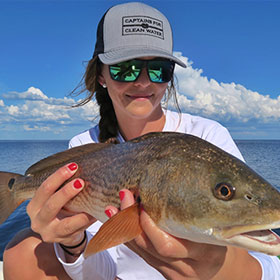How, When and Where to Put Sinkers on Fishing Line
By Alycia Downs
Jan 21, 2019
Sinkers are essential tackle for all anglers. Learn common types of sinkers, where to put sinkers on fishing line, and great tips for using sinkers correctly.
Sinkers are weights made of poured lead that can be tied or clamped onto your fishing line to help your bait sink to certain depths. The style and weight will depend on conditions such as water depth, size of bait, and strength of the current. The key is to affix the sinker in a manner that doesn’t compromise your presentation or how attractive your bait is to the fish. In this article, we’ll cover when and where to put sinkers on fishing line and also how to put sinker on fishing line. When it comes to fishing gear and tackle, sinkers are staple items that should be stocked in your tackle box at all times.
Where to put sinkers on fishing line:
Where to put sinkers on fishing line varies depending on the complexity of the rig and intended bait presentation. There are countless shapes and sizes of sinkers, each intended for a specific use in fishing. How to put sinker on fishing line depends on the style of the sinker. Here are the most common sinkers used in fishing.
- Split shot - small, round weight with a slit in the middle, clamp onto fishing line by pinching shut with fingers or pliers. Most single-line rigs utilize a sturdy monofilament or fluorocarbon leader between the fishing line and the terminal tackle. When used with a bobber at the top of the leader, place one or two split shots two or three inches above the hook.
- Rubber core - elongated weights with a rubber-lined groove. Insert leader line into groove and twist the rubber to secure.
- Sliding - Sliding sinkers, such as egg sinkers, have a hole bored through the center. These are often used for drift or bottom fishing and can be rigged above the leader by securing with a swivel and adding a plastic bead to protect the knot.
- Tied - Tied sinkers have a small brass ring, loop, or molded eye protruding from the top or bottom where a knot can easily be tied. These are often used for deeper water and stronger currents. Again, placement varies for more complex rigs.









